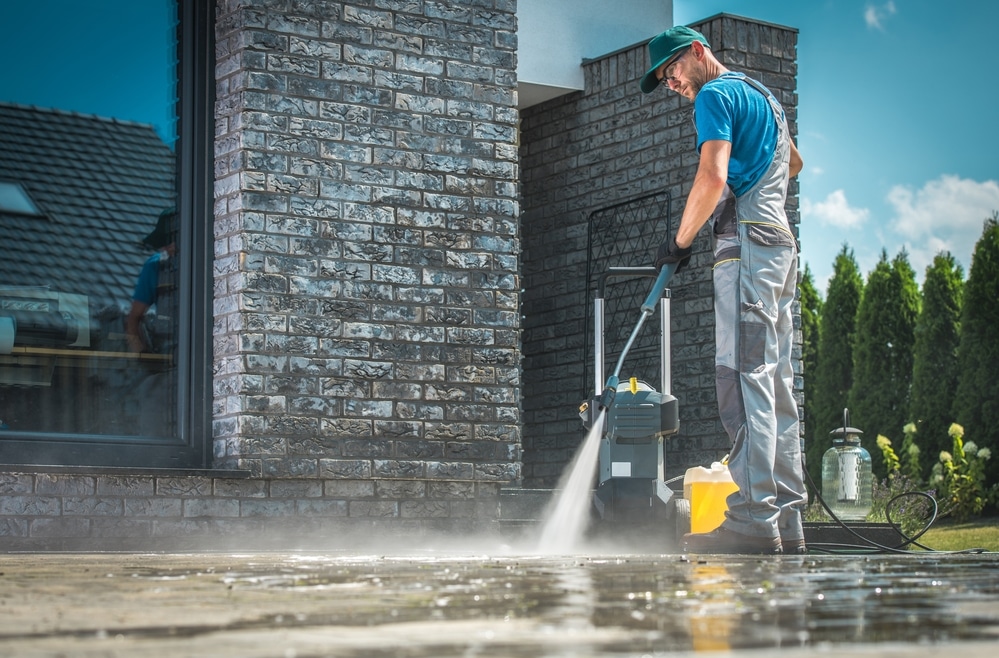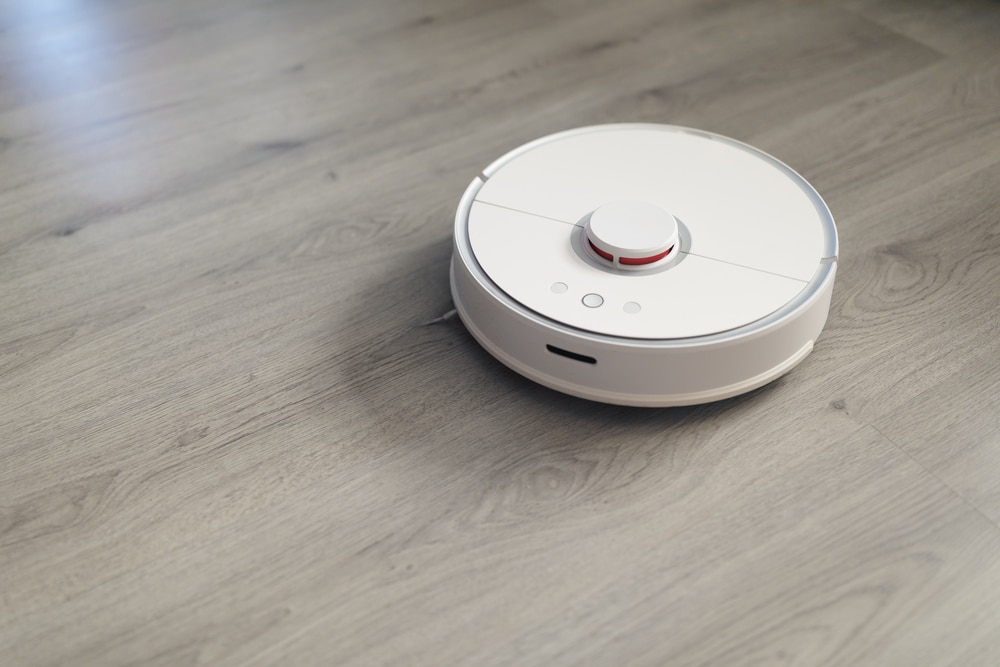Last Updated on
Pressure washing is a great way to clean a variety of hard surfaces like decks, driveways, car tyres, siding, a patio, and more. While using a pressure washer may seem a bit complicated at first glance, pressure washing can actually be quite easy if you know what you are doing.
Whether you just purchased a new pressure washer or plan on renting one to get added cleaning power for an upcoming project, it is not uncommon to have a few questions about how to get started. This article will teach you how to use a pressure washer and offers some pro pressure washer tips to help you get rid of stubborn dirt and grime from around your home with minimal effort.
Getting Started
How Do Pressure Washers Work?
Pressure washers work by pressurising water from a garden hose or other uninterrupted steady water supply so that you can spray it out at a much higher pressure than your hose can achieve. The water passes through a water inlet and filter and is pushed into a pump powered by an engine. Then, the water sprays out of a wand similar to a high-pressure water jet.
Some pressure washers also have a tank giving you the option to add detergent or soap to the water spray. While many pressure washers are great at cleaning without a detergent, the addition of a detergent helps to break the bond between the stain or dirt and the area you are cleaning.
What Can You Do With a Pressure Washer?
Pressure washers can be used for cleaning a wide variety of hard outdoor surfaces that tend to develop stains, grease, grime, or dirt patches. They are most commonly used for cleaning things like siding, wood or vinyl decks, concrete floors and walls, cars and car tyres, sewers, gutters, outdoor furniture, and machinery.
Safety First: Before You Begin
Pressure washers are completely safe to use as long as you take a few safety precautions.
- Always wear safety goggles, gloves, and close-toed shoes while using a pressure washer. Water spray shoots out at high speeds, and you want to avoid any debris from getting in your eyes or coating your skin.
- You may also want to wear hearing protection, especially if you are using a gas-powered pressure washer. Gas-powered pressure washers are exceptionally loud, and wearing headphones can make the experience less abrasive overall.
- Never use a gas pressure washer in an enclosed area as the fumes can be highly toxic and lead to serious health issues like carbon monoxide poisoning if not properly ventilated.
- Avoid touching any hot parts on your pressure washer while it is in use. The motor and pump can build up quite a bit of heat and can potentially burn your skin.
- Make sure you read the user manual for your specific device before you get started. The manual can give you advice on cleaning solutions, the specific details for your machine, what pressure setting to use for different types of cleaning projects, what nozzles to use for what type of projects, the recommended maximum run time per use, and more.
- For the most part, it is not recommended you use an extension cord with a pressure washer as it can be dangerous.
How to Use a Pressure Washer: Basic Instructions and Pro Washer Tips
Step 1: Prepare the Area You Want to Clean
To start, you will want to prepare the area you intend to pressure wash. This involves clearing any objects in the surrounding areas and covering anything that could be damaged by the high-pressure spray like plants, fresh paint, or lighting fixtures. Covering plants will help to keep any detergent or soap you use off and will also prevent the dirty water from coating the plants and soil.
Step 2: Prepare the Power Washer
When the concrete, deck, or other surface is ready, you will want to prepare the pressure washing machine. Start by attaching your garden hose. Then, check to make sure all of the connections are tight and secure to prevent air from entering the lines.
Set the spray output and the water pressure to no or low pressure. This will help you avoid any kind of kickback when you start the engine later on. At this point, the spray wand should not have a nozzle attachment on end unless, of course, your pressure washer does not have interchangeable tips.
Step 3: Turn On the Water and Release Excess Air
Next, you will want to turn on your spigot to the highest water pressure possible. You want a higher pressure to ensure the machine can build up enough internal pressure to wash the surface.
When the water flow has been turned on, squeeze the trigger on the spray wand to release any air from within the hoses and prepare the water pump.
Pro Tip: If you find you do not have enough water pressure, first check to make sure there are not any kinks in your garden hose. You will also get a higher pressure water output if you use a shorter hose.
Step 4: Start Your Pressure Washer
Now it is time to start the engine on your pressure washing machine. If you are using an electric pressure washer, you will want to plug in the power cord and power up the engine, usually with a switch. If you are using a gas-powered pressure washer, make sure you steady the machine with one of your feet while you pull the starter cord. This will help create some leverage making it easier to pull while also preventing the pressure washer from sliding on the ground.
Let your pressure washer run for approximately one minute while the engine and pump warm up.
Pro Tip: Do not leave running for more than a couple of minutes while the spray trigger is off to prevent possible damage to the pump
Step 5: Adjust Settings or Attach a Spray Nozzle
While you wait for your pressure washer to get powered up, choose the spray and pressure setting you plan on using for your specific cleaning job. Or, if your specific device has different nozzles, choose the appropriate nozzle and insert it into the wand tip, with the trigger locked in the off position.
Step 6: Start Pressure Washing
Finally, it is time to start washing with the high-pressure spray wand. Hold the trigger and start spraying the area you wish to clean. Spray using long strokes that overlap to get the best coverage. Repeat until the entire area has been covered.
Depending on how heavy-duty your cleaning job is, you may be able to simply spray the surface with water to get the desired results. However, using detergents or even a scrub brush can often be extremely helpful. If you are using a detergent, add some to the pressure washer’s internal tank before you begin. Start the cleaning process by rinsing the surface with water at a high pressure to loosen dirt. Then, apply the detergent using a wide-angle spray to wash away the dirt and other buildups. At this point, you can scrub stubborn stains with a brush, but you may find it unnecessary if your washer emits a high-pressure spray. Lastly, rinse the surface with just water.
Spraying Technique Pro Tips:
- At first, you may want to hold the spray wand with both hands. This will help give you better control while you pressure wash.
- Do not hold the tip of the spray wand too close to the surface you are pressure washing, or you could damage some more fragile materials such as wood or brick.
- Always hold the spray wand nozzle at a 45-degree angle. If you spray the water flow directly at the surface, it can force the dirt further into the surface. With a 45-degree angle, the nozzle stands a better chance of washing the dirt away.
- Start by power washing a small area first and then move on.
- When pressure washing siding or other vertical structures, always wash from the bottom up and rinse from the top down in order to prevent streaks.
Step 7: Finishing Up
After you are done cleaning, turn off the engine, turn off the water, and unplug from mains if you are using an electric pressure washer. Give the machine plenty of time to cool off after being powered down and then put it away or return it to the shop you rented it from, and you are all done.
Other Things to Consider
How Do You Choose the Right Spray Nozzle?
Many pressure washers come with removable nozzles that emit different spray patterns. The nozzle you choose should be based on the cleaning project you are trying to complete. Following is a general overview, but keep in mind what you learned when reading the user manual.
- Red nozzle / 0-degree spray pattern: This is the most concentrated, high-pressure spray, so you may want to avoid it, at least at first, so it doesn’t cause accidental damage.
- Yellow nozzle / 15-degree spray pattern: Used for removing tough stains and grime from a distance and surface prepping concrete.
- Green nozzle / 25-degree spray pattern: Common for use around the house, cars, lawn furniture, boats, driveways, and decks. Green may be the most commonly used nozzle.
- White nozzle / 40-degree spray pattern: Gentle spray is good for blinds and possibly even windows.
- Black / low-pressure spray pattern: Good for use with detergents and soaps.
Gas vs Electric Power Washers
The two main types of pressure washers are gas and electric.
Gas pressure washers are the most common type found for sale or rent. In general, they are more powerful, making them the best option for larger jobs. They spray up to 3000 pounds per square inch (psi) and use two to three gallons per minute of water. Gas pressure washers do not require mains power to work, but they are significantly louder than their electric counterparts.
Electric pressure washers are typically best for light-duty cleaning jobs. They typically spray between 1,300 and 1,400 psi and use 1 to 1.5 gallons of water per minute. They are more lightweight, quieter, less expensive, and do not produce toxic fumes like their gas counterparts.
Power Washing Made Easy
After reading through our helpful guide and pressure washer tips, we hope you feel ready to start pressure washing surfaces around your home safely and effectively. While there may be quite a few steps involved in the process, just remember that once you try it out, it should become fairly easy. Keep in mind that detergents can improve the results you get from power washing wood, concrete, and other surfaces and finish up with a clean water rinse, and you should do great.
Let us know what you think in the comments below.
Emily is a woman of many talents. She has a B.A. in English and enjoys writing. Emily loves accessorising her home with quality products that not only serve a purpose but also enhance the overall convenience and tranquillity of her living space; there’s nothing like coming home to your own personal sanctuary after a long day! She loves anything that can make life easier or more comfortable—from dishware to furniture to lighting fixtures.



